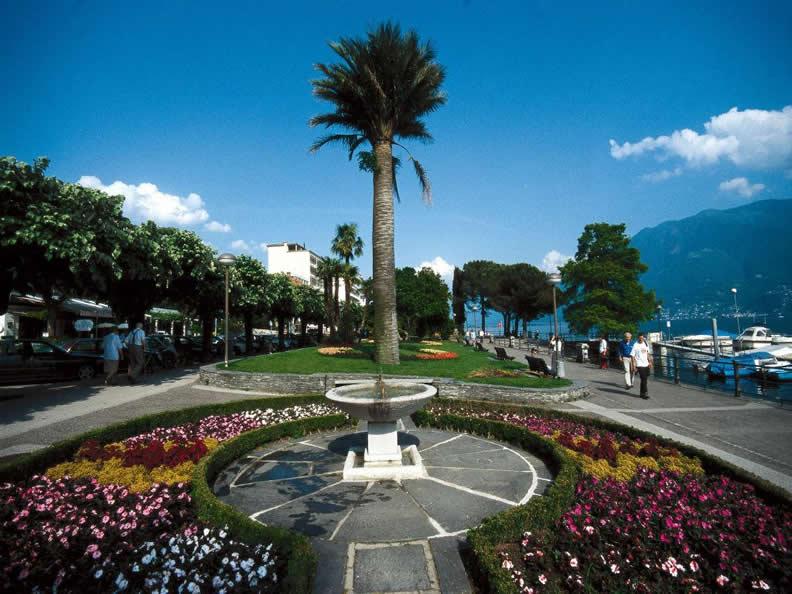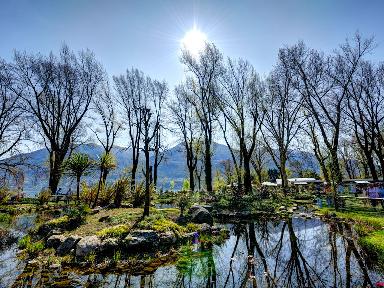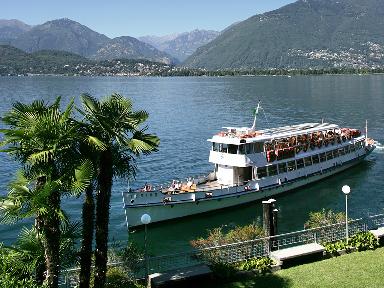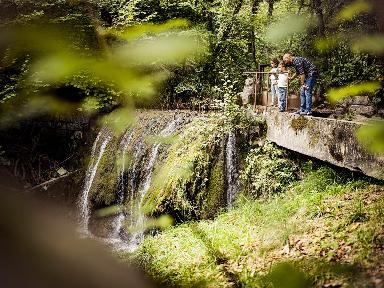
This is an attractive 1.5 km long walk along the lakeside where Mediterranean and subtropical species can be found. Some species grow outdoors throughout the year only along this part of the lake and on the Brissago Islands. Examples stand out such as the rare and ancient Chilean and Jelly Palms and the bald cypress trees. The “Pioda and Rusca gardens” include centuries-old specimens of ancient types of camellias and two majestic ginko trees. A row of limes and a double row of holm-oaks lead to the Jean Arp gardens.
The lakeside in Muralto has plants which represent China and Japan ornamental bananas (Musa basjoo) and the Cycas revoluta. Representative of the Mediterranean are plants such as the European fan palm, myrtle and cork oak. Australia is represented by the eucalyptus, Brazil by the Acca (Feijoa) sellowiana and the Canary Islands by Phoenix canariensis. Not to be forgotten are the ancient and monumental blue palm (Brahea armata) and the Chilean coconut tree (Jubea chilensis).
The Pioda gardens are geometrically structured in a more classical way, in a baroque style. Regular flowerbeds have kept their original structure and house some of the oldest ornamental species in the Locarno area.
The Rusca gardens, on the other hand, are less formal. Here various species of palm trees can be found such as the Japanese palm (Trachycarpus fortunei), European fan palm (Chamaerops humilis), and Chilean vine palm (Jubea chilensis). Typical Cycas and various types and species of Yucca and Cordyline can also be found here.
A row of new and old lime-trees takes the visitor to the Jean Arp gardens. These are made up of a double row of holm-oaks with a green area in the middle which contains nine works of art donated by Jean Arp (1886-1966) to Locarno.
Features
- PARKS AND GARDENS Botanical gardens








